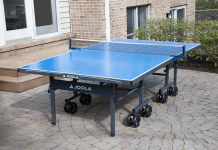I remember the first time that I heard of Ticket to Ride soon after it was released. I was just out of college and was more familiar with American standard games. Think Clue, The Game Of Life, Battleship. Maybe a few party games like Scattergories. So when a college friend told me about Ticket to Ride I was very confused. A board game about making train routes? No thanks, I want to track down a killer. Or an art thief (maybe sometime I’ll write about the most underrated board game of all time, Clue: The Great Museum Caper).
Related Article: Complete Clue Strategy Guide
Eventually I moved to suburbia and a neighborhood game night got started, which I was happy to be a part of. After everyone got tired of the typical games, someone brought out Ticket To Ride. “Oh yeah, this is that game where you plan out train routes, right?” I honestly wasn’t that excited, but I sure wasn’t going to put up a fuss at a neighborhood game night.
By the end of the night I didn’t want to stop playing. I was ready to go until the sun came up. The problem, of course, is that I was terrible at it. There was a lot I didn’t understand yet about good Ticket to Ride strategy. I knew that, as usual, I needed to analyze the game and get a strong strategy quickly.
The great thing about Ticket To Ride is that there are may versions other than just the original. I went out and bought Ticket to Ride: First Journey. This is the one made for kids, and I definitely bought it “for the kids” (imagine my sarcastic finger quotes as you read that sentence).
Playing this game is how I perfected my Ticket to Ride strategy. Once I moved up to the adult game the strategy carried over pretty easily. I’m happy you’re here so that I can share some of that strategy with you.
Table of Contents
Why I Love Ticket to Ride
A huge part of the reason I love this game is that a lot of people somehow don’t know it yet. Maybe it’s just my group of friends? But it seems like I’m often introducing this game to people for the first time. Seeing the look on their face mid-game as they get really in to it is very exciting to me. A good game of Clue is always enjoyable, but showing someone a new game they’ve never seen is rare.
Related Article: Battleship Ship Placement Strategy
But also this game has a great combination of easy game play with strong need of strategy. So many games have easy game play with not much need for strategy, or they’re endlessly complex and you’ll never win unless you’ve studied hours and hours of strategy guides. This is one of the few games I can think of that’s easy to play but involves a lot of good strategy.
This is also a great game to play with kids. As you’ve likely seen in some of my other articles, one of my favorite reasons for playing boards games is to play with my kids. Because the game play is so easy, this is a great game to play with your children. They may not beat you very much. A good strategy is really needed here. But they should at least enjoy playing the game with you.
Tips for Building your Ticket to Ride Strategy
Once you know the rules it’s time to start building out your strategy. There are plenty of ways to win and unless you have a plan, you can find that your many strategies are competing against each other in the middle of the game. If you have a coherent plan going in to the game, winning should be a breeze.
1. Maximize your Destination Efficiency
You start the game with 3 destination cards, and you have to keep at least 2 of them. Keep as many as you can that work well together. If you draw Miami-Nashville, Helena-Kansas City, and El Paso-San Francisco, those are all fine routes and you shouldn’t have trouble completing them. But wouldn’t it be better if the routes connected or you could make your turns more efficient? Try to get routes that are close to each other and easy to connect, or that have parts that duplicate.
Related Article: Strategies to Raise Your Scattergories Scores
Example
In that example above, I’d suggest getting rid of Miami-Nashville and trying to pick up another destination. Imagine if you also got El Paso-Las Vegas? Then some of the trains you put down are doing double duty and working towards two destination cards. The more you can do this, the more points you’ll rack up. And there are many, many destination cards that double up like that. This is especially true on the East Coast of the map (at least in the US version). Because the cities are so close you can combine routes pretty easily.
2. Know The Routes
A simple rule of thumb is the longer the route, the more points it’s worth. You’re not going to earn as many points going from New York to Pittsburgh as you will going from New York to Seattle (which is the longest route in the game). Collecting a bunch of short destination cards has its place – sometimes this can get you some quick points before someone else can block a route for you. But being able to put together longer routes can get you many more points. This is especially true if you use those some short routes to make it easier to complete long routes down the road (or down the track).
Related Article: Yahtzee Strategy Simplified
Example
A lot of people will give up the New York-Seattle card because they think it will take too long or will get blocked before they can complete it. But imagine you’ve already completed Seattle-Denver and Helena-Toronto. You’re already most of the way to New York-Seattle! So keeping that card and knowing how many points it gives you can be really beneficial to your game.
3. Get A Lot of Train Cards Early
Early in the game you’re not likely to know exactly all of the colors you’ll need and what you’ll wish you had in your hand later. Toward the beginning you should get as many colors as you can. You should especially concentrate on the “face-down” pile so you’ll get a good random draw of cards. Having a lot of many different colors will help you complete many different routes later.
Related Article: Splendor Strategies for 2, 3 and 4 players
Concentrating on collecting many train cards early also means you’ll be able to claim a lot of 6-train routes earlier than your opponents. If they’re spending all of their time laying down 2- and 3-train routes while you’re collecting cards, eventually they’re going to have to spend 3-4 turns just drawing cards to build up their inventory again. Meanwhile, you’ll be able to claim a few of the longer routes. This blocks your opponents from those routes, and makes sure that you can claim the bonus points for those destination cards!
4. Be A Card Counter
If you know blackjack, then you know that card counting can be an effective way to get an advantage over the house. Counting cards in Ticket to Ride can also be an effective way to get an advantage over your opponents. Each individual color only has 12 cards in the deck. Considering the long routes that claim some of those colors, that’s not that many for each color! You should try to keep track of how many of each color has been played. Or at least try to remember if “a lot” of a color has been played if you can’t remember the exact number.
Example
So if you see that 9 trains have been played using red cards, it’ll be a big waste of your time to try to play on a route that needs 6 red trains (like Miami-New Orleans). There just likely aren’t enough cards left for that route to make sense.
Related Article: Boggle Strategies
Now I’m sure you may be thinking “but what about the wild cards!” And that’s a valid point. However, there are only 14 of those in the deck. So if there are only 3 reds left in the deck, you’ll need 3 wild cards for that route to work. If you want to take the chance you’ll draw that many, then feel free. That has a slightly better chance of working if you’re only playing against 1-2 other opponents. But if there are more people playing, then there are too many people drawing those cards to think that you have a chance for that many wilds.
5. Claim Routes Early if There is Only One Track On The Route
You’ll notice that some routes between cities have two tracks, while others have just one. So it’s not as important to claim a route between two cities if there are two tracks. If someone claims one of the tracks and you need those cities, you can claim the other track. But when there’s only one track between two cities, it’s very important to try to claim it early if you plan to work that area.
Example
If you’re going to work in the western portion of the map this is especially important. There are some long single-track routes out there. If you’re trying to go from Seattle to Omaha and you don’t claim either Seattle-Helena or Helena-Omaha, you’re going to have a long time trying to work around those blocked routes. It’s going to take a lot of turns to then go Seattle-Portland-Salt Lake City-Omaha. Claiming the single-track routes early can help you make your destinations easier, and also block your opponents.
6. Speaking of Blocking Your Opponents…
Often times it’s very easy to tell what your opponents are trying to do. You may even see them physically counting spaces on routes they want to use. Sometimes it may be worth spending a turn to block a route that an opponent really needs. This again helps you (you get points for every train you lay down, even if it’s not part of a destination card you’re playing) and can really hurt your opponent. It may mean that suddenly they have to spend 2-3 turns going around the route you blocked in order to complete what they wanted to do.
Related Article: Strategies for Disney’s Villainous
Don’t use this strategy if it’s going to take you away from hitting your goals, though. Only do this if you think you can manage to spend a single turn blocking a route. You can’t make this your entire game strategy – you’ll waste too many turns without completing any destination cards. But if you have enough color cards in your hand to block a route, and you aren’t worried about your opponents using that time to then block your route, this can be very effective.
Example
You see that your opponent is trying to complete Helena-Toronto. The easy way is to go direct: Helena-Duluth-Toronto. Maybe your plan is to work the east coast of the map, but defensive Ticket to Ride strategy would say to block one or the other end of that attempt. If you block Helena-Duluth, suddenly your opponent has to switch tactics and go up through Winnipeg or down through Omaha. Or even further around if those routes are blocked too.
7. Grab the Beginning and End of Long Routes Early
When looking at the longer routes, you should notice that it’ll be easier to work around your opponents blocking you if they block the middle of the route. If you at least lock up the beginning and end of the route, you’ll find it much easier to adjust your route if necessary.
Example
Let’s look at El Paso-New York. If you can lock up El Paso-Oklahoma City and Pittsburgh-New York early, then you won’t have as much hard work to do in order to avoid a blocked route. You have nearly endless possibilities to getting around depending on what else your opponents have done.
8. Be Flexible
Playing off of what I mentioned in the item above, you have to be prepared to be flexible. Getting upset and not having a plan if your opponents block one route isn’t going to help you. In fact, I’ve never played a single game of Ticket to Ride in which I didn’t have to be flexible. I almost always have to adjust my routes mid-game. Most of the tips above actually go toward making sure you’re flexible if necessary. Like drawing a lot of train cards at the beginning – if you have a lot of color cards in your hand, you’ll have an easy time getting around blocked routes and won’t have to work as hard to complete your destination cards. Just prepare mentally in advance for the fact that you will have to adjust your planning at some point.
Related Article: Tiny Towns Strategies
Strategy Summary
So that’s a lot to take in, I know. Try to realize though that a lot of these tips really play off of each other.
Maximizing your efficiency is made easier if you know the routes for which there are destination cards. Getting train cards early will help you count everyone else’s cards as they’re played. This is because everyone will likely have fewer cards than you). Claiming one-track routes will help you block your opponents routes, and often plays in to trying to get the beginning and end of your own routes.
Because these tips play in to each other so well, you’ll start to notice that you’re doing all of these things without really even having to think about it. Sometimes you might even be doing some of them completely by accident (you may block the most important route for your opponent just by trying to play your own destination cards).
But If I could only give you one piece of advise, its the last tip – be flexible, especially if you have many opponents in the game. It will be nearly impossible to control everything if you have many opponents. Being ready mentally to be flexible is helpful. Then taking actions that will help you be flexible will make sure that you won’t miss a beat if your opponents ruin your plans.
The people who I know who have the toughest time are the ones who aren’t flexible. They are the ones who see a route and can only imagine the most direct path. If you make them deviate from that in any way, they self-destruct and can’t find a way to move forward. Don’t be that player. If you can avoid that, you’ll win your fair share of games.
Put these tips in place and you should be running the game in no time. Good luck!

Veronica is a Green Bay-based freelance writer and editor with extensive experience with board games. When not busy scribbling her thoughts, you might find her in her garden, hiking out in the woods, or exploring new food joints.
Veronica is a die-hard board game and chess hobbyist by night. She likes to try out new games and is always on the lookout to recruit new players for her game night (so beware!). When not playing board games or throwing darts, she is usually busy painting miniatures (or doing other nerdy stuff).
She is the CEO & Content Writer of Indoor Games Zone. She shares her expertise from years of playing chess, board games, and darts.

![Stiga XTR Pro Review | 1,559+ Global Ratings (In-Depth Guide) [year] Stiga XTR Pro Review](https://indoorgameszone.com/wp-content/uploads/2021/08/Stiga-XTR-Pro-Review-218x150.jpg)






